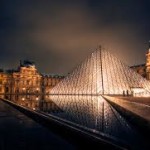For many years, the landscape painting was the number one way to record a scene. Artists around the world became famous for their approach to mountains, oceans, fields and the effects of light at different times of day. Though people use their cameras more often today, there are still secrets to be uncovered in the art of the landscape painting. A recent discovery in an auction catalogue of two works by popular artist Warren Williams made headlines, proving that people are still enamoured of the art form. Whether a budding artist or an established great talent, here are our tips for making your landscape pieces the best they can possibly be.
Be Selective: Be An Artist

When looking out over a dramatic scene, the artist is under no obligation to include every single detail of what they can see. It is far better to approach with a critical artistic eye and then reproduce the elements which have the strongest character. Rather than trying to paint every single tree, perhaps look at painting those which add the most interest and change the shape of the vista. Likewise, painting interpretations of the most significant elements will cut out the distracting elements which might otherwise detract from the cohesion of the piece. For perfect copies of the landscape, we could just take a photograph and print it for display. Artists are able to imbue the scene with emotion and power which could otherwise be hard to capture. Most landscape paintings are to show the fundamental essence of a selected location – the drama of the hills, the motion of the waves, the roll of the fields and trees – rather than to make themselves totally accurate representations.
Use the Foreground
Just as in any kind of artwork, priority should be given to the immediate foreground. In a landscape, whose depth of image can cover significant distances, it would be impossible to devote as much detailed attention to the furthest points as to the closest elements. The distant horizon can be implied in colours and brush strokes rather than accurately painted in painstaking detail. The foreground also acts as the entrance to the painting, creating a focus for the viewer and allowing them to engage with the piece. Having no clear focal point is a serious issue for paintings which try and give every element equal weighting.
Know Your Greens
It is perfectly reasonable to keep several shades of green paint in amongst your art supplies. Purists historically claimed that it was ‘cheating’ and that all green shades should be mixed from blue and yellow, but in modern practical terms that is totally unnecessary. Whilst it remains very important to understand the different shades and their relative warmth and coldness, these can be adapted from a selection of core green paints rather than created from scratch. It can be useful to follow this link and explore the range of paints available. A basic set of paints can be used to create numerous shades and variations.
A landscape scene can be a beautiful reminder of time spent somewhere special as well as the perfect addition to any wall. Experiment with our tips and see what artwork you can produce.
Image attributed to: http://www.flickr.com/photos/designandtechnologydepartment/3972545169/
Source: http://www.dailypost.co.uk/whats-on/arts-culture-news/rare-find-paintings-north-wales-6714427






